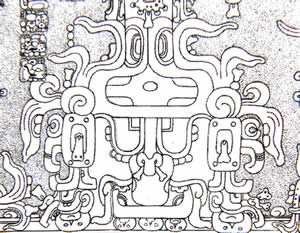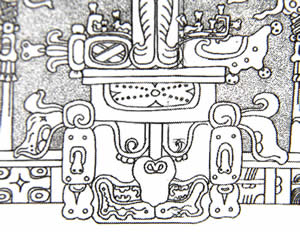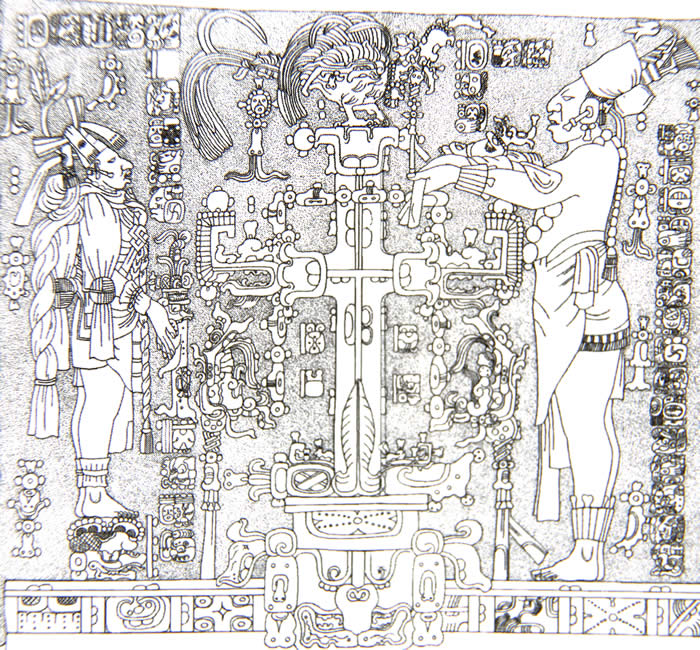
Garden of Earthly Delights- the fountain of divine influence: the corruption of the divine influence |
This small vignette contains an entire story about the nature of the divine influence as it enters the world.
On the left, we see the gems (fine influences) of the divine inflow as it reaches the material world, depicted with the color blue. The deep blue implies a solidity and purity.
The bird perched on the crystal – which is transparent, thus perfect, and offering no obstacle to the influence of God — represents the highest possible principles which can be achieved on the earthly plane — principles which are immediately transformed in their encounter with the human mind, represented by the water and the pool.
A piece of the bedrock upon which the divine influence rests has broken away from it — separating the separation of the divine influence from its origins – and on it is perched a frog, a symbol of transformation.

The frog sits squarely between the divine influences in their least corrupted state (under the fountain) and the corrupted state of influences as they reach the mind of man, represented on the right-hand side. Bosch put this figure here to make the meaning of the transition from the left to the right in this section perfectly clear.
The lizard with three heads, by the way, is a specific reference to the corruption of the ideas of the Holy Trinity.
We can compare the image of Bosch's "underworld" — the earthly plane, and man's subconscious— to the Mayan images of the monsters of the underworld rooted at the base of the world tree in the artworks at Palenque. The relationship to these images and Bosch's painting may not be immediately apparent, but each one depicts a transformation of the divine energy, associated with water and the underworld — man's consciousness — in comparison to the divine influences that create it, which all lie above the root, or base, influence.

Base of the world tree from the cross in the Temple of the foliated Cross, Palenque

Base of the world tree from the cross from the tablet of the Cross, Palenque

Image of the world tree, in its entirety. This visual element has essentially the same symbolic meaning as Bosch's divine fountain. In each case, the divine energy, flowing downward, gives birth to material reality and the abundance of nature, including an underworld which contains not only the beauty of life, but aquatic, cthonic monstrosities.
Both sets of symbolic allusions represent the manner in which earlier cultures understood the ideas of Carl Jung's collective unconscious. These cultures intentionally integrated their understanding of the unconscious realm with the spiritual nature of man and his higher aspirations.